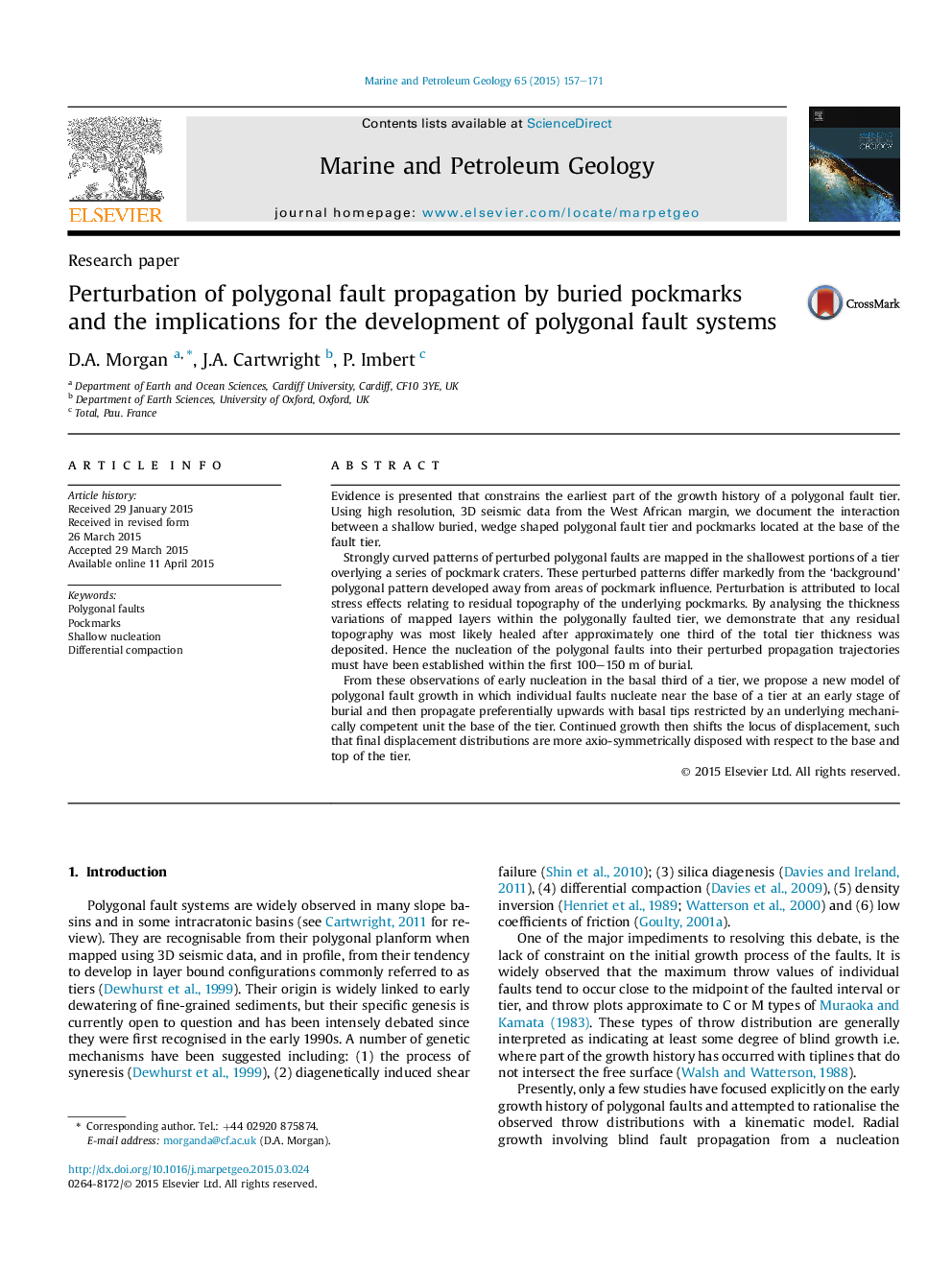| Article ID | Journal | Published Year | Pages | File Type |
|---|---|---|---|---|
| 6435049 | Marine and Petroleum Geology | 2015 | 15 Pages |
â¢Evidence is presented for an upward propagation model for polygonal faults.â¢Pockmarks formed at the base of a polygonal fault tier perturb fault propagation.â¢The perturbed fault patterns are only found in the lower third of a shallow buried tier.â¢Main implication is that polygonal faults nucleate during the first 100-200 m of burial.â¢Perturbation is related to subtle horizontal tress anisotropy above relict pockmark relief.
Evidence is presented that constrains the earliest part of the growth history of a polygonal fault tier. Using high resolution, 3D seismic data from the West African margin, we document the interaction between a shallow buried, wedge shaped polygonal fault tier and pockmarks located at the base of the fault tier.Strongly curved patterns of perturbed polygonal faults are mapped in the shallowest portions of a tier overlying a series of pockmark craters. These perturbed patterns differ markedly from the 'background' polygonal pattern developed away from areas of pockmark influence. Perturbation is attributed to local stress effects relating to residual topography of the underlying pockmarks. By analysing the thickness variations of mapped layers within the polygonally faulted tier, we demonstrate that any residual topography was most likely healed after approximately one third of the total tier thickness was deposited. Hence the nucleation of the polygonal faults into their perturbed propagation trajectories must have been established within the first 100-150Â m of burial.From these observations of early nucleation in the basal third of a tier, we propose a new model of polygonal fault growth in which individual faults nucleate near the base of a tier at an early stage of burial and then propagate preferentially upwards with basal tips restricted by an underlying mechanically competent unit the base of the tier. Continued growth then shifts the locus of displacement, such that final displacement distributions are more axio-symmetrically disposed with respect to the base and top of the tier.
